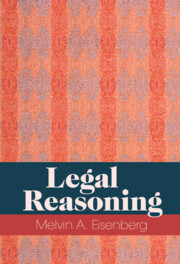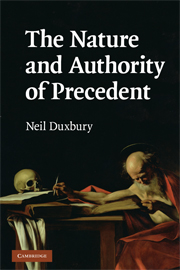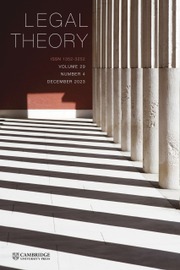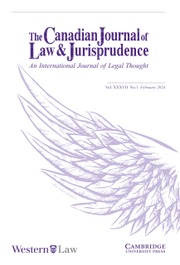Legal Reasoning
The common law, which is made by courts, consists of rules that govern relations between individuals, such as torts (the law of private wrongs) and contracts. Legal Reasoning explains and analyzes the modes of reasoning utilized by the courts in making and applying common law rules. These modes include reasoning from binding precedents (prior cases that are binding on the deciding court); reasoning from authoritative although not binding sources, such as leading treatises; reasoning from analogy; reasoning from propositions of morality, policy, and experience; making exceptions; drawing distinctions; and overruling. The book further examines and explains the roles of logic, deduction, and good judgment in legal reasoning. With accessible prose and full descriptions of illustrative cases, this book is a valuable resource for anyone who wishes to get a hands-on grasp of legal reasoning.
- Provides a thorough introduction to the common law
- Includes comprehensive case illustrations
- Gives law and pre-law students the tools to understand not only individual subjects but how cases are decided and how courts make law
Reviews & endorsements
‘In Legal Reasoning, Melvin Eisenberg has produced a short but quite comprehensive and readable overview of the forms of reasoning employed by lawyers and judges, with copious examples drawn from the author’s encyclopedic knowledge of the common law.’ Larry Alexander, Warren Distinguished Professor, University of San Diego School of Law
‘Mel Eisenberg, long regarded as one of America’s most distinguished jurists, has produced an illuminating overview of the Common Law. Legal Reasoning is beautifully structured, briskly argued, and gracefully illustrated with dozens of cases. The case method in tort, property, and contract sometimes gives the impression of just one damn thing after another. But Common Law really comes to life in these pages, as Professor Eisenberg makes a compelling case for reconciling principled and pragmatic considerations in the woven fabric of the law.’ Jeremy Waldron, University Professor, NYU School of Law
Product details
September 2022Hardback
9781009162524
180 pages
235 × 159 × 12 mm
0.34kg
Available
Table of Contents
- Preface
- 1. A brief introduction to the common law
- 2. The rule-based model of legal reasoning
- 3. Reasoning from precedent and the principle of stare decisis
- 4. How it is determined what rule a precedent establishes
- 5. Reasoning from authoritative although not legally binding legal rules
- 6. The role of social morality, social policy, and empirical propositions in legal reasoning and the judicial adoption of new legal rules based on social propositions
- 7. Legal rules, principles, and standards
- 8. The malleability of legal rules
- 9. Hiving off new legal rules, creating exceptions to established rules, and distinguishing
- 10. Reasoning from analogy
- 11. The roles of logic, deduction, and good judgement in legal reasoning
- 12. Reasoning from hypotheticals
- 13. Overruling.





